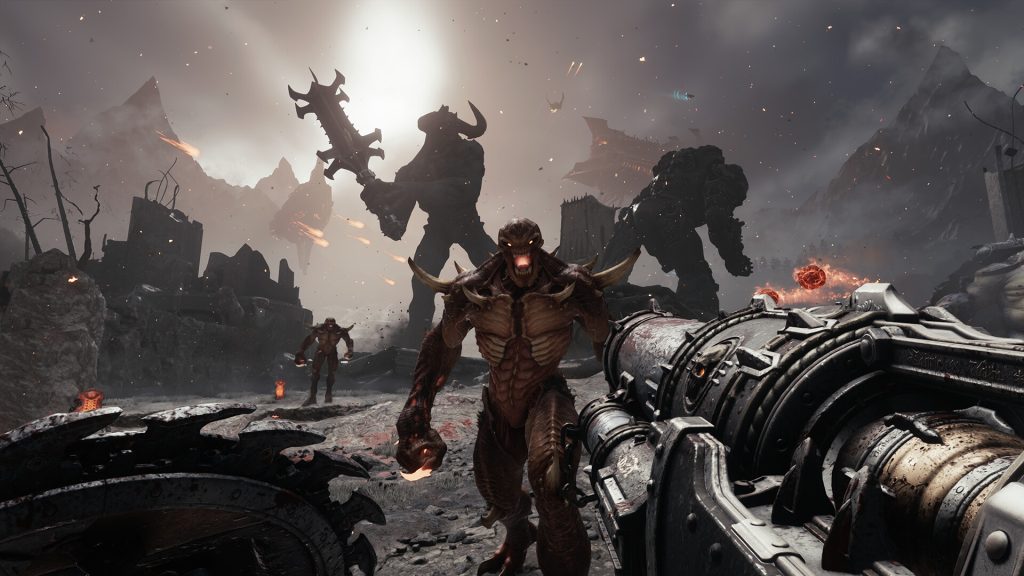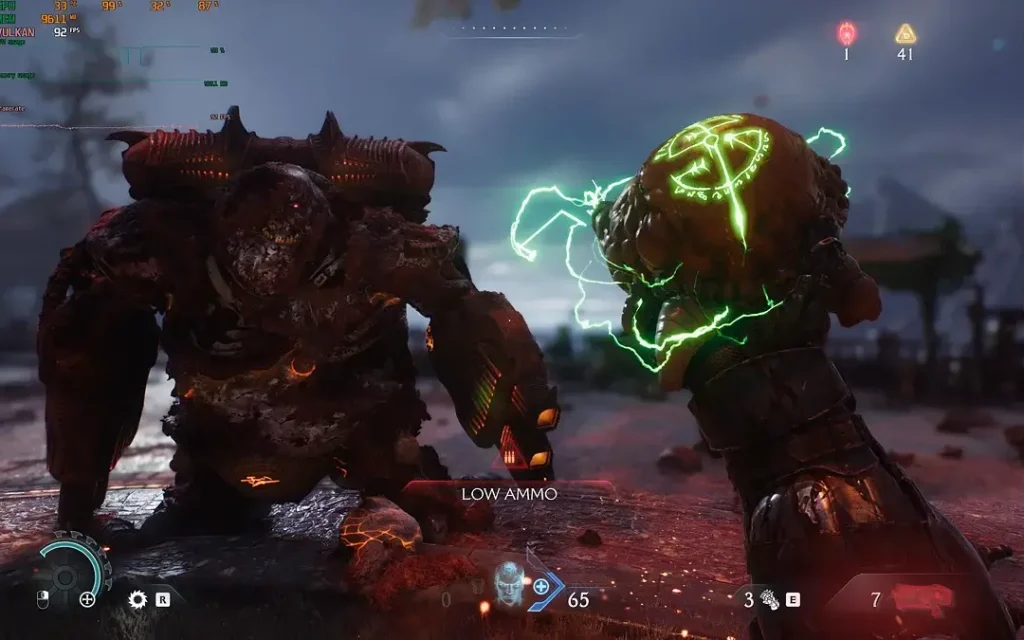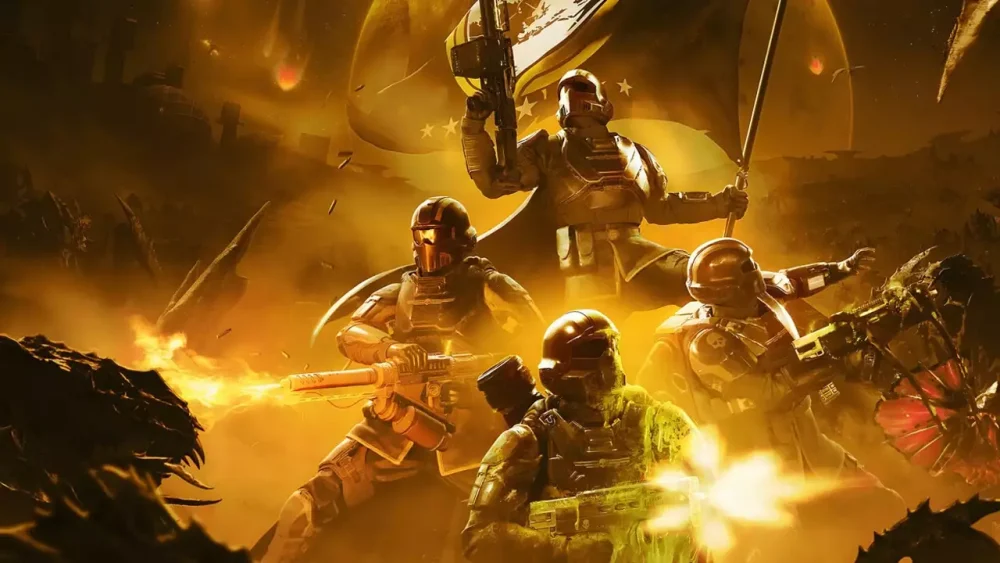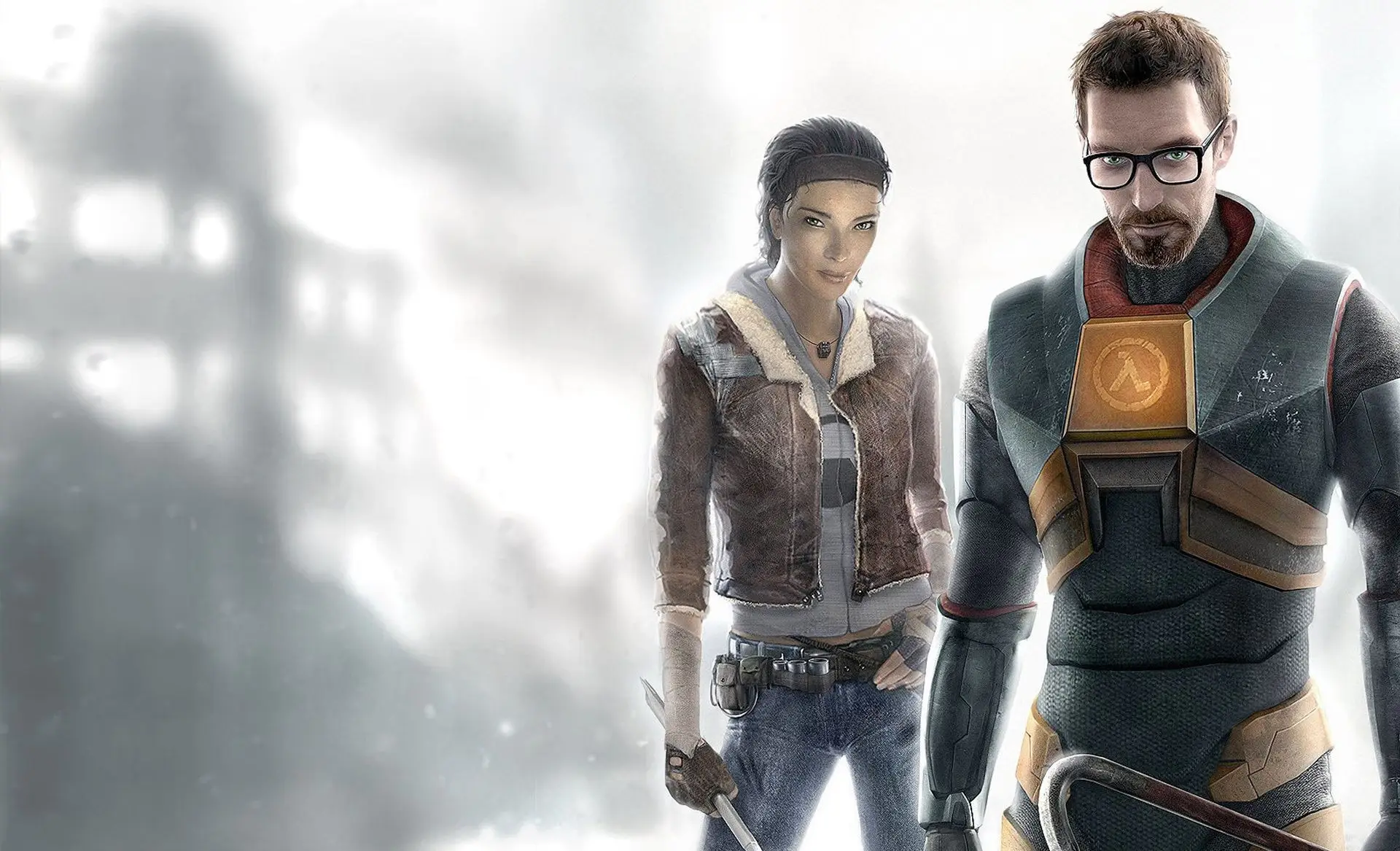The Doom shooter series set the standard for the genre back in the 90s. Each release restarted the canons, increased the tempo, upgraded the mechanics and tested the hardware for strength. The new Doom Project: The Dark Ages does the same thing, but with a radical turn towards dark fantasy. Gothic spires, catacombs, hand—to-hand weapons, plate-armored demons, and mystical artifacts are a concept the world has never seen before. Instead of urban science fiction, medieval metal, blood magic, and dark chronicles of the fall of humanity.
In the article we will talk about the release date of Doom.: The Dark Ages, although this is just the tip of the iceberg. The release hides an innovative engine, thoughtful optimization, flexible system requirements and a philosophy of hurricane gameplay. We’ll talk about that too.
Doom: The Dark Ages release date, release window, and distribution format
Doom: The Dark Ages is preparing a large-scale campaign to launch on several platforms at once. The developer has scheduled the release for the end of the second quarter of 2025. The final window shifted towards May-June to avoid overloading the spring season and ensure a smooth launch. This step opens up space for marketing pressure, cross-platform partnerships, and a steady stream of patches.
The project will be released simultaneously on PC and current generation consoles. For the first time in the history of the series, full support for game streaming platforms is provided, including cloud hubs with the ability to broadcast RTX graphics without local hardware. Doom release Date: The Dark Ages is connected not only with the calendar, but also with the transition to a new model of consumption — hybrid, mobile, highly accessible.
Engine architecture and technological foundation
 Instead of the classic id Tech engine, the game uses a customized version that focuses on destruction geometry and magic effect physics. The focus has shifted from lighting to the simulation of materials, armor, blood, organic matter, and the reactions of armored demons to attacks and fire. The game features tessellation of destruction, generative shaders, and particle tracing technologies in fog, smoke, and precipitation. The release date of Doom: The Dark Ages is directly dependent on the final stabilization of these systems, as most of the effects place a significant strain on the graphics card and RAM.
Instead of the classic id Tech engine, the game uses a customized version that focuses on destruction geometry and magic effect physics. The focus has shifted from lighting to the simulation of materials, armor, blood, organic matter, and the reactions of armored demons to attacks and fire. The game features tessellation of destruction, generative shaders, and particle tracing technologies in fog, smoke, and precipitation. The release date of Doom: The Dark Ages is directly dependent on the final stabilization of these systems, as most of the effects place a significant strain on the graphics card and RAM.
Doom the Dark Ages: system requirements
The full range of engine features supports a flexible scale from minimal settings to ultra-high quality with full 4K and DLSS 3. In this regard, the system requirements are divided into three levels.
Minimum configuration (1080p, 30 fps):

-
Processor: Ryzen 5 2600 or Intel i5-9600K.
-
RAM: 16 GB.
-
Graphics card: GeForce GTX 1660 or Radeon RX 590.
-
Disk space: 70 GB.
-
OS: Windows 10 64-bit.
Recommended requirements (1440p, 60 fps, high settings):
-
Processor: Ryzen 7 3700X or Intel i7-10700.
-
RAM: 32 GB.
-
Graphics card: GeForce RTX 3060 or Radeon RX 6700 XT.
-
SSD: required.
-
DirectX 12.2 support.
Ultra Settings (4K, ray tracing, 120+ fps):
-
Processor: Ryzen 9 7900X or Intel i9-13900K.
-
RAM: 64 GB DDR5.
-
Video card: RTX 4080 / 4090.
-
NVMe SSD: 2 TB of free space.
-
OS: Windows 11.
The mode selection affects not only the graphics, but also the physics of interactions — on ultra settings, the game generates a simulation of object deformation, flying shards, and realistic fluid dynamics.
A gameplay twist: close combat and medieval mechanics
Developers have always promoted the concept of a non-stop shooter. Doom release Date: The Dark Ages marks an era of new dynamics: an emphasis on close combat, physical confrontation, and the use of artifacts. An arsenal of cold steel weapons is introduced into the game — war hammers, rune-engraved blades, shields with the function of energy reflection.
The finishing system has become part of the tactic: the player activates chain reactions, sets fire to a group of enemies, causes landslides, floods, or directs reflected projectiles back at the target. Rage mode transforms visuals and mechanics: the screen turns red, and time speeds up, creating the effect of combat blindness. It is in these episodes that the engine unleashes its power — with light distortions, chromatic aberrations, and texture vibrations.
Artwork and audio design
The visual style of the project forms an independent artistic universe. Doom release Date: The Dark Ages accompanies not just the launch of a shooter, but the release of a full-fledged aesthetic platform. The designers abandoned technofuturism and turned to images that arouse subconscious fears. The visual code is based on a combination of religious symbols, anatomical hyperrealism, and architectural crudeness. Each location conveys a sense of oppressive grandeur: sharp spires, layered Gothic facades, scenes of executions in the background, statues of saints with empty eye sockets.

The palette highlights the dim glow of candles, the reflections of magma in the cracks of the earth, as well as the colors of oxidized bronze, bloody iron and ashen stone. Special effects highlight the physical pain of the location — the walls are falling down, the fabrics of the space are tearing, the spirits are whispering. The audio component complements the visual images. The composer combines medieval motifs with an industrial sound. The parts include looped prayers passed through glitch modulators, excerpts from Latin hymns, the clang of fetters and the gnashing of bones. The basis is created by an electronic rhythm that turns into dissonance at the climaxes of the battle waves. Individual compositions are accompanied by choral inserts from real monastery archives, processed by the synthesis of the reverse phase. Doom release Date: The Dark Ages will also mark the return of sound design, as mechanics of fear, not scenery.
Variability and campaign settings
The game structure demonstrates a high level of adaptability to the passing style. The player gets access to a mosaic world map, where each region is activated in an independent order. This approach creates the illusion of freedom in a strictly set rhythm and tempo. For example, the same dungeon changes the type of enemies, resources, traps, and even plot inserts at different times of the day.
Each mission offers additional objectives: freeing prisoners, activating cursed artifacts, burning relics, or destroying gates between worlds. Doom release Date: The Dark Ages opens not just one plot, but dozens of its interpretations. The design of the levels supports changing wind direction, flooding of rooms, and geometry transformation. If necessary, the player causes temporary collapses, blocks entrances, and reshapes the route on the fly.
The modification system is implemented at the engine level. The tools include graphical templates, an AI behavior editor, an animation script system, and a physics constructor for objects. The release is also accompanied by a library of custom scripts available in a shared catalog with the ability to sort by genre, difficulty, rating, and duration. Users will be able to create full-fledged campaigns with their own cutscenes, voice acting, art, and even mechanics — for example, a survival mode in a cursed temple with a running out torch or a stealth mode in catacombs with relic spirits.
Conclusion
 The project is positioned not as a continuation of Doom Eternal, but as its ritualistic opposite. The pace has remained, but the presentation has changed: instead of techno-punk, there is a black medieval. The Martian stations have been replaced by cursed valleys, temple cemeteries, and underground alchemist laboratories.
The project is positioned not as a continuation of Doom Eternal, but as its ritualistic opposite. The pace has remained, but the presentation has changed: instead of techno-punk, there is a black medieval. The Martian stations have been replaced by cursed valleys, temple cemeteries, and underground alchemist laboratories.
Now, we are waiting for the release date of Doom: The Dark Ages to enjoy this masterpiece game.
 en
en  de
de  ar
ar  es
es  hi
hi  fr
fr  nl
nl  it
it  pt
pt  el
el 










